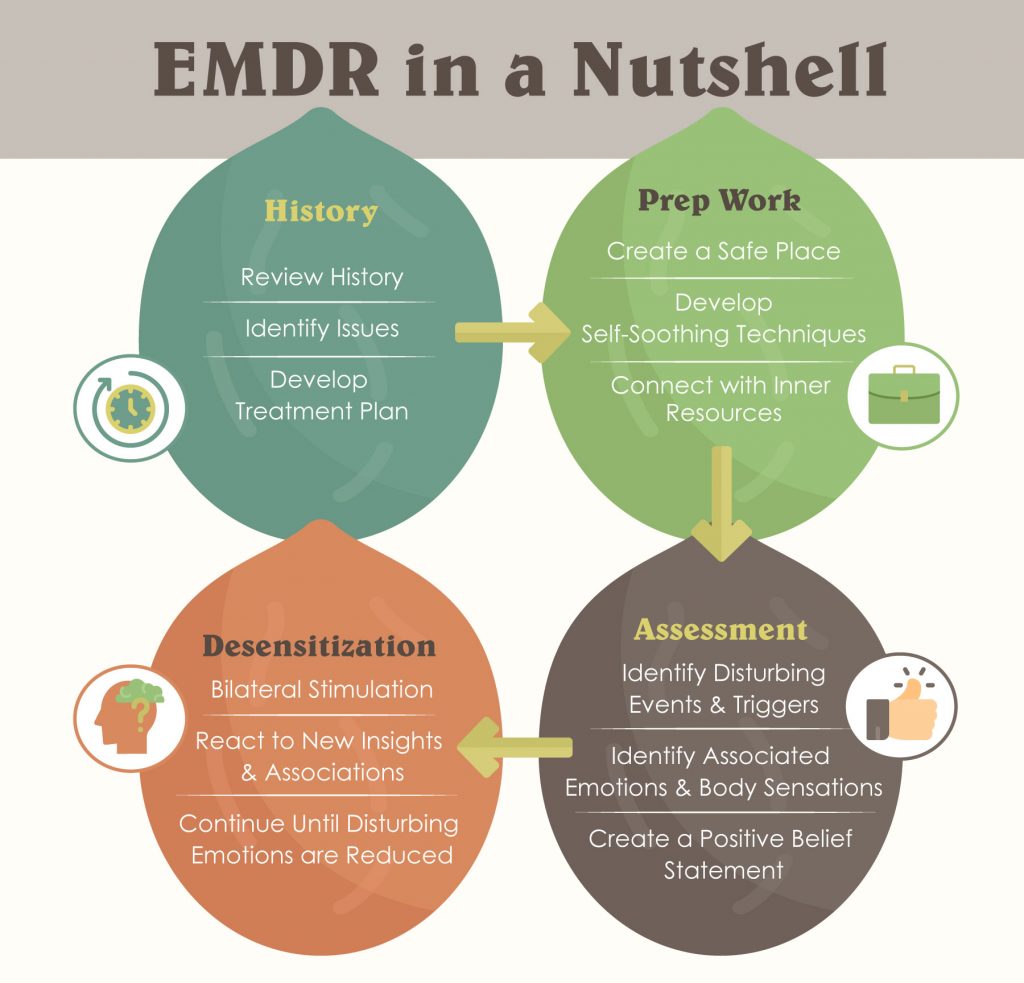What is EMDR therapy?
When it comes to addressing various concerns, there’s a treatment option that’s gaining popularity – Eye Movement Desensitization and Reprocessing Therapy, or EMDR therapy. This therapy is commonly used for symptoms of PTSD and unprocessed trauma. However, its effectiveness extends to anxiety, depression, addiction, and eating disorders, among others.
Individuals who have faced trauma may find it difficult to fully process their experiences, leading to a cycle of recurring symptoms. EMDR Therapy targets these unprocessed memories through eye movement, akin to the REM sleeping phase.
In simpler terms, EMDR is a memory-based form of psychotherapy that uses rhythmic eye movements to evoke images and sensory details related to traumatic events. Other tools such as sound, pulsators, or hand-tapping can be used instead of eye movements.

How does EMDR works?
This rhythmic movement, known as bilateral stimulation, involves moving the eyes side to side while focusing on a moving point, like a light bar, pulsator, or the use of sound. This bilateral movement aids in reprocessing trauma, enabling clients to update the way their brain stores traumatic information.
Will I experience discomfort during EMDR therapy?
Given that EMDR aims to reprocess trauma, it’s normal to feel a manageable increase in emotional distress during sessions. Remember, the goal is to address past traumatic experiences. Once the therapy sessions conclude, emotional responses and symptoms are likely to diminish significantly and may not resurface.
What to expect in an EMDR session?
In the initial sessions, your therapist will prioritize creating a safe and welcoming environment. These sessions will involve gathering information to establish collaborative EMDR goals. You’ll be encouraged to recall an “image” or “snapshot” related to your trauma, which becomes the target memory to begin an EMDR session.

How is the bilateral stimulation performed?
When your therapist identifies the target image or snapshot, you’ll be prompted to bring it to mind. While focusing on that image, you’ll be guided to move your eyes rapidly back and forth (if a light bar is used) for about 15 to 20 seconds. Afterward, you’ll be encouraged to share thoughts or sensations, whether images, sounds, scents, or other sensory experiences.

The stage of EMDR Therapy
EMDR therapy unfolds in eight stages: history, preparation, assessment, desensitization, installation, body scan, closure, and debriefing. The time taken to move through these stages varies depending on each unique case. At the end of each session, you and your therapist will reassess the impact and discuss the new insights gained.
The aim of EMDR therapy is to facilitate rapid transformation. The duration of this therapy hinges on the depth and complexity of the trauma being addressed. Consequently, the more intricate the traumatic experience, the longer you may require EMDR sessions.

It’s important to note that EMDR, being a fast-acting therapy, is often complemented by other forms of treatment and support due to the intricate nature of trauma reprocessing. For instance, your therapist might conduct an EMDR session followed by a processing or debriefing session the following week.
If you’ve undergone trauma or are grappling with symptoms of other mental health concerns, EMDR therapy could be beneficial for you. Initiating a conversation with a certified EMDR therapist is the initial step in determining if EMDR therapy aligns with your needs.
EMDR Therapy at panahi counseling
In you live in Illinois, we invite you to learn more about our EMDR therapy and discover how it could transform your life. Our team of dedicated professionals, including David Panahi, LCPC, EMDR, and Callie Aswegen, LCPC, EMDR, are trained in this method and are ready to walk with you on your journey to healing.
To learn more about our EMDR services, schedule an appointment with our intake coordinator today.
Share Post:
Start your therapy journey today.
Schedule a 15-Minute Free Consultation With Our Intake Coordinator.



